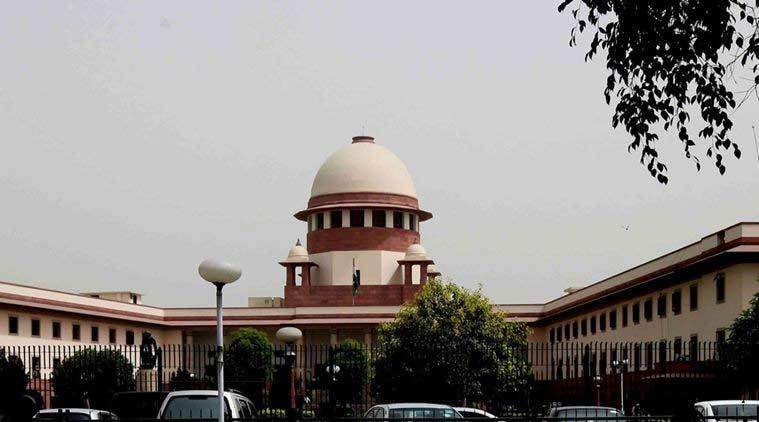More than a year after the Supreme Court applied the creamy layer principle to promotions for Scheduled Castes and Scheduled Tribes in government jobs, the Centre Monday urged the top court to refer its decision to a larger bench.
Attorney General K K Venugopal told a bench of Chief Justice of India S A Bobde and Justices B R Gavai and Surya Kant that the question decided by a five-judge bench in the Jarnail Singh case last year must be sent to a seven-judge bench.

EXPLAINEDView from the other side
Those opposed to exclusion of the creamy layer among SCs/STs from promotions say it’s an attempt to exclude persons even before filling the ranks, and will delay the march towards the goal of equality. They say the case of SCs/STs is different from that of the OBCs, and experience has shown that these persons need constant support.
He submitted that the Supreme Court had not applied the creamy layer concept to SCs and STs in the 1992 Mandal case — a reference to Indra Sawhney & Others vs Union of India in which the Supreme Court, while issuing directions, ordered exclusion of the creamy layer of OBCs from reservation benefits. The bench said it will hear the matter after two weeks.
The bench was hearing a plea by NGO Samta Andolan Samiti which, claiming to represent the poor among the SCs and STs, urged it to direct the Centre “to amend the Constitution (Scheduled Castes) Order, 1950 and the Constitution (Scheduled Tribes) order, 1950… after evolving and undertaking an objective and rational test for identification of the creamy layer among the SCs/STs and separating the same from non-creamy layer SCs/STs with regard to affirmative action/reservation law made under Article 14, 15 and 16 of the Constitution of India… such… test… must conform to the Constitutional ideals of social justice and equality of opportunity”.
The petition stated that the states had so far not “objectively tested the means to identify” the creamy layer of SCs/STs, and that the “advantageous class” among the SCs and STs was “cornering the benefits of reservation”. It said it was confining its plea for now to reservation in government services and academic institutions.
Senior advocate Gopal Sankaranarayanan, appearing for the Samta Andolan Samiti, opposed the plea to refer it to seven-judge bench, saying it had already been already referred to a five-judge bench in the Jarnail Singh case.
In September 2018, a five-judge Constitution Bench, ruling in the Jarnail Singh case, applied the creamy layer principle to promotions for SCs and STs in government jobs. It said states no longer need to collect quantifiable data on the backwardness of SCs and STs in granting quota in promotions, but will have to back it with data to show their inadequate representation in the cadre.
Story continues below this ad
That bench declined to refer to a larger bench its 2006 verdict in the M Nagaraj & Others vs Union of India matter. Venugopal, appearing for the Centre, had favoured reconsideration of the Nagaraj verdict on the ground that it was non-implementable and had brought promotions to a standstill. He had contended that “the creamy layer concept has not been applied in Indra Sawhney… to the Scheduled Castes and the Scheduled Tribes” and Nagaraj had been “misread” to apply this concept to the SCs and STs.
In the Nagaraj case, a five-judge bench upheld the Constitutional validity of the 77th, 81st, 82nd and 85th Amendments which, the petitioners claimed, were brought to reverse the effect of the decision in the Indra Sawhney case.
The bench had ruled that if the state “wish(ed) to exercise their discretion and make (a) provision (for reservation in promotions for SCs/STs), the State has to collect quantifiable data showing backwardness of the class and inadequacy of representation of that class in public employment in addition to compliance of Article 335”.
Article 335 of the Constitution relates to claims of SCs and STs to services and posts. “The claims of the members of the Scheduled Castes and the Scheduled Tribes shall be taken into consideration, consistently with the maintenance of efficiency of administration, in the making of appointments to services and posts in connection with the affairs of the Union or of a State,” it states.
Story continues below this ad
The ruling in the Nagaraj case had also stated: “It is made clear that even if the State has compelling reasons, as stated above, the State will have to see that its reservation provision does not lead to excessiveness so as to breach the ceiling-limit of 50% or obliterate the creamy layer or extend the reservation indefinitely.”

 Senior advocate Gopal Sankaranarayanan, appearing for the Samta Andolan Samiti, opposed the plea to refer it to seven-judge bench, saying it had already been already referred to a five-judge bench in the Jarnail Singh case.
Senior advocate Gopal Sankaranarayanan, appearing for the Samta Andolan Samiti, opposed the plea to refer it to seven-judge bench, saying it had already been already referred to a five-judge bench in the Jarnail Singh case.






